Lincolnshire
53°4′N 0°11′W / 53.067°N 0.183°W
Lincolnshire | |
|---|---|
| Motto(s): Land and God | |
 | |
| Sovereign state | United Kingdom |
| Constituent country | England |
| Region | East Midlands Yorkshire and the Humber (North Lincolnshire & North East Lincolnshire) |
| Time zone | UTC+0 (GMT) |
| • Summer (DST) | UTC+1 (BST) |
| Ceremonial county | |
| Area | [convert: needs a number] |
| • Rank | of 48 |
| • Rank | of 48 |
| Density | [convert: needs a number] |
| Ethnicity | 98.5% White |
Lincolnshire (/ˈlɪŋkənʃər/ or /ˈlɪŋkənʃɪər/; abbreviated Lincs) is a historic county in the east of England. It borders Norfolk to the south east, Cambridgeshire to the south, Rutland to the south west, Leicestershire and Nottinghamshire to the west, South Yorkshire to the northwest, and the East Riding of Yorkshire to the north. It also borders Northamptonshire in the south for just 20 yards (18 m), England's shortest county boundary.[1] The county town is Lincoln, where the county council has its headquarters.
The ceremonial county of Lincolnshire is composed of the non-metropolitan county of Lincolnshire and the area covered by the unitary authorities of North Lincolnshire and North East Lincolnshire. Therefore, part of the ceremonial county is in the Yorkshire and the Humber region, and part is in the East Midlands region. The county is the fifth largest of the English counties and one that is predominantly agricultural in land use. The county can be broken down into a number of geographical sub-regions including: the Lincolnshire Fens (south-east Lincolnshire), the Carrs (similar to the Fens but in north Lincolnshire), the rolling hills of the Lincolnshire Wolds, the industrial Humber Estuary and North Sea coast around Grimsby and Scunthorpe, and in the south-west of the county, the Lincolnshire Vales, comprising limestone hills in the district of South Kesteven.
History

Lincolnshire derived from the merging of the territory of the ancient Kingdom of Lindsey with that controlled by the Danelaw borough of Stamford. For some time the entire county was called "Lindsey", and it is recorded as such in the Domesday Book. Later, Lindsey was applied to the northern core, around Lincoln, and emerged as one of the three Parts of Lincolnshire, along with the Parts of Holland in the south-east and the Parts of Kesteven in the south-west, which each had separate Quarter Sessions as their county administrations.
In 1888 when county councils were set up, Lindsey, Holland and Kesteven each received their own separate one. These survived until 1974, when Holland, Kesteven, and most of Lindsey were unified into Lincolnshire, and the northern part, including Scunthorpe Municipal Borough and Grimsby County Borough, was incorporated into the newly formed non-metropolitan county of Humberside, along with most of the East Riding of Yorkshire.
A further local government reform in 1996 abolished Humberside, and the land south of the Humber was allocated to the unitary authorities of North Lincolnshire and North East Lincolnshire. These two areas became part of Lincolnshire for ceremonial purposes such as the Lord-Lieutenancy, but are not covered by the Lincolnshire police and are in the Yorkshire and the Humber region.
The remaining districts of Lincolnshire are Boston, East Lindsey, Lincoln, South Holland, North Kesteven, South Kesteven, and West Lindsey. They are part of the East Midlands region.
A more recent event was the 27 February 2008 Lincolnshire earthquake, reaching between 4.7 and 5.3 on the Richter scale; it was one of the largest earthquakes to affect Britain in recent years.
Lincolnshire is home to Woolsthorpe Manor, birthplace and home of Sir Isaac Newton. Grantham also contains the still functioning Kings Grantham which was the school attended by Newton and its library still holds on the window sill his teenage signature.
Economy
This is a chart of trend of regional gross value added of Lincolnshire at current basic prices published (pp. 240–253) by Office for National Statistics with figures in millions of British Pounds Sterling.
| Year | Regional Gross Value Added (millions of GB₤)[a] | Agriculture[b] | Industry[c] | Services[d] |
|---|---|---|---|---|
| 1995 | 5,719 | 657 | 1,769 | 3,292 |
| 2000 | 6,512 | 452 | 2,046 | 4,013 |
| 2003 | 8,419 | 518 | 2,518 | 5,383 |
- a Components may not sum to totals due to rounding
- b includes hunting and forestry
- c includes energy and construction
- d includes financial intermediation services indirectly measured
Agriculture
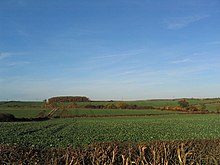
Lincolnshire is an agricultural area, growing large amounts of wheat, barley, sugar beet, and oilseed rape. In South Lincolnshire, where the soil is particularly rich in nutrients, some of the most common crops include potatoes, cabbages, cauliflowers, and onions. South Lincolnshire is also home to one of the UK's leading agricultural experiment stations located in Sutton Bridge operated by the Potato Council, Sutton Bridge Crop Storage Research engages in research for the British potato industry.[2]
Mechanisation around the turn of the 20th century greatly diminished the number of workers required to operate the county's relatively large farms, and the proportion of workers in the agricultural sector dropped substantially during this period. Several major engineering companies developed in Lincoln, Gainsborough and Grantham to support those changes, perhaps most famously Fosters of Lincoln, who built the first tank, and Richard Hornsby & Sons of Grantham. Most such companies are long gone, and Lincolnshire is no longer an engineering centre.
Today, immigrant workers mainly from new member states of the European Union in Central and Eastern Europe comprise a very large component of the seasonal agricultural workforce, particularly in the south of the county where more labour-intensive crops such as small vegetables and cut flowers are typically grown. This seasonal influx of migrant labour occasionally causes tension between the migrant workforce and local people, in a county which is still relatively unaccustomed to the large-scale immigration experienced by other parts of the United Kingdom. However as a result of the current economic climate some food production facilities have closed down, this has caused some reduction in the levels of migrant workers. The large number of people from Portugal is still very obvious in the town of Boston, and in Grantham the large number of Polish workers is still very apparent.[3][4]
Politics
Westminster Parliamentary constituencies
| General Election 2010 : Lincolnshire | ||||||||
|---|---|---|---|---|---|---|---|---|
| Conservative | Labour | Liberal Democrats | UKIP | BNP | Others | English Democrats | Green | Turnout |
| 235,502 +63,170 |
122,634 −42,694 |
99,595 +20,063 |
25,018 +2,201 |
18,076 +15,713 |
4,775 +3,764 |
1,121 +347 |
1,120 +39 |
507,841 +62,603 |
| Overall Number of seats as of 2010 | ||||||||
|---|---|---|---|---|---|---|---|---|
| Conservative | Labour | Liberal Democrats | UKIP | BNP | Others | English Democrats | Green | |
| 9 | 2 | 0 | 0 | 0 | 0 | 0 | 0 | |


The Conservative Party won 9 seats in the 2010 general election and clearly became the largest party in Lincolnshire, considerably increasing their vote share at the expense of Labour, the most high profile casualty being Gillian Merron who lost her long serving Lincoln constituency.
| Parliamentary Constituencies | |||
|---|---|---|---|
| Constituency | District | MP | Party |
| Boston and Skegness | Boston, East Lindsey | Mark Simmonds | Conservative |
| Brigg and Goole | North Lincolnshire (plus part in East Riding of Yorkshire) | Andrew Percy | Conservative |
| Cleethorpes | North East Lincolnshire, North Lincolnshire | Martin Vickers | Conservative |
| Gainsborough | West Lindsey, East Lindsey | Edward Leigh | Conservative |
| Grantham and Stamford | South Kesteven | Nicholas Boles | Conservative |
| Great Grimsby | North East Lincolnshire | Austin Mitchell | Labour |
| Lincoln | Lincoln, North Kesteven | Karl McCartney | Conservative |
| Louth and Horncastle | East Lindsey | Sir Peter Tapsell | Conservative |
| Scunthorpe | North Lincolnshire | Nic Dakin | Labour |
| Sleaford and North Hykeham | North Kesteven, South Kesteven | Stephen Phillips | Conservative |
| South Holland and The Deepings | South Holland, South Kesteven | John Henry Hayes | Conservative |
Lincolnshire County Council

The Conservative Party comfortably controlled the County Council, following the 2009 local elections in which they increased their majority to 43 seats. The Labour Party lost a total of 15 seats including 7 in Lincoln, whilst the Liberal Democrats lost three. The Lincolnshire Independents gained a total of four seats, although one of their number moved to the Conservative group during 2010, increasing the number of Conservative seats to 61. The collective group of the Lincolnshire Independents, the Boston Bypass Party and other independent councillors formed the opposition for the four-year term.
In the 2013 County Council elections, the Conservatives lost their majority and formed a coalition with the Liberal Democrats and independents. The UK Independence Party made significant gains from the Conservatives, particularly around the town of Boston, due to opposition to Eastern European immigration.[5]
| Party | Seats | Gains | Losses | Net gain/loss | Seats % | Votes % | Votes | +/− | |
|---|---|---|---|---|---|---|---|---|---|
| Conservative | 36 | 1 | 26 | –25 | 46.75 | 35.75 | 58,119 | –29,645 | |
| UKIP | 16 | 16 | 0 | +16 | 20.78 | 24.17 | 39,289 | +33,681 | |
| Labour | 12 | 7 | 0 | +7 | 15.58 | 18.40 | 29,919 | +9,720 | |
| Lincolnshire Independent | 8 | 5 | 0 | +5 | 10.39 | 11.34 | 18,428 | +794 | |
| Liberal Democrats | 3 | 0 | 2 | –2 | 3.90 | 4.36 | 7,093 | –29,392 | |
| Independent | 2 | 1 | 0 | +1 | 2.60 | 5.43 | 8,831 | –1,110 | |
| BNP | 0 | 0 | 0 | 0 | 0 | 0.27 | 435 | –6,109 | |
| TUSC | 0 | 0 | 0 | 0 | 0 | 0.20 | 323 | N/A | |
| Green | 0 | 0 | 0 | 0 | 0 | 0.08 | 136 | –974 | |
2011 AV Referendum
The AV referendum was the first to be held within Lincolnshire since the 1975 EC referendum and was only the second time ever that the people of Lincolnshire have been asked to vote in a referendum. The referendum asked voters whether to replace the present "first-past-the-post" (simple plurality) system with the "alternative vote" (AV) method for electing MPs to the House of Commons in future general elections. The proposal to introduce AV was overwhelmingly rejected by voters with all eight counting areas within Lincolnshire returning massive "no" votes.
| County | No votes | Yes votes | No % | Yes % |
|---|---|---|---|---|
| Lincolnshire | 232,034 | 76,570 | 75.19 | 24.81 |
The seven shire-districts, and two unitary authorities within Lincolnshire were used as the Counting Areas.
| Counting Areas | Turnout % | No votes | Yes votes | No % | Yes % |
|---|---|---|---|---|---|
| Boston | 39.58 | 13,337 | 3,958 | 77.11 | 22.89 |
| East Lindsey | 42.60 | 34,045 | 10,571 | 76.31 | 23.69 |
| Lincoln | 36.68 | 16,099 | 6,951 | 69.84 | 30.16 |
| North East Lincolnshire | 34.23 | 29,484 | 9,549 | 75.54 | 24.46 |
| North Lincolnshire | 39.57 | 36,031 | 12,542 | 74.18 | 25.82 |
| North Kesteven | 42.95 | 27,397 | 7,926 | 77.56 | 22.44 |
| South Holland | 39.83 | 20,542 | 5,603 | 78.57 | 21.43 |
| South Kesteven | 42.63 | 32,217 | 11,247 | 74.12 | 25.88 |
| West Lindsey | 43.70 | 22,882 | 8,223 | 73.56 | 26.44 |
Police and Crime Commissioners
On 15 November 2012 the people of Lincolnshire voted for the first time to elect Police and Crime Commissioners . Two commissioners were elected within Lincolnshire, one to cover the Lincolnshire Police Force Area whilst voters in North Lincolnshire and North East Lincolnshire voted for a commissioner within the Humberside Police Force Area. As was the case in other parts of the country the elections were marked by extremely low turnouts: in the Lincolnshire Police Force Area the turnout was 15.35% and in the Humberside Police Force Area 19.15%.
Lincolnshire Police
| Lincolnshire Commissioner election, 2012 (The Lincolnite) | |||||||||
|---|---|---|---|---|---|---|---|---|---|
| Party | Candidate | 1st round | 2nd round | 1st round votesTransfer votes, 2nd round | |||||
| Total | Of round | Transfers | Total | Of round | |||||
| Independent | Alan Hardwick | 26,272 | 31% | 12,949 | 39,221 |
| |||
| Campaign to Stop Politicians Running Policing | David Bowles | 27,345 | 33% | 7,741 | 35,086 | {{{totalpercent}}} |
| ||
| Conservative | Richard Davies | 19,872 | 24% |
| |||||
| Labour | Paul Gleeson | 10,847 | 12% |
| |||||
| Majority | 11,876 | ||||||||
| Turnout | 85,626 | 15.35% | |||||||
| Independent win | |||||||||
Humberside Police
| Humberside Commissioner election, 2012 | |||||||||
|---|---|---|---|---|---|---|---|---|---|
| Party | Candidate | 1st round | 2nd round | 1st round votesTransfer votes, 2nd round | |||||
| Total | Of round | Transfers | Total | Of round | |||||
| Conservative | Matthew Grove | 29,440 | 22.01% | 12,724 | 42,164 |
| |||
| Labour | John Prescott | 33,282 | 24.88% | 6,651 | 39,933 |
| |||
| Independent | Paul Davison | 28,807 | 21.54% |
| |||||
| UKIP | Godfrey Bloom | 21,484 | 16.06% |
| |||||
| Liberal Democrats | Simone Butterworth | 11,655 | 8.71% |
| |||||
| Independent | Walter Sweeney | 5,118 | 3.83% |
| |||||
| Independent | Neil Eyre | 3,976 | 2.97% |
| |||||
| Majority | 2,231 | ||||||||
| Turnout | 133,762 | 19.15% | |||||||
| Conservative win | |||||||||
Services and retail
According to an IGGI[clarification needed] study in 2000,[6] the town centres were ranked by area thus (including North Lincolnshire and North East Lincolnshire areas):
- Lincoln
- Grantham
- Grimsby
- Boston and Scunthorpe (equal)
- Spalding
- Stamford
- Skegness
- Louth
- Sleaford
- Gainsborough
- Brigg
- Cleethorpes
- Bourne
- Horncastle and Mablethorpe (equal)
Public services
Education
Lincolnshire is one of the few counties within the UK that still uses the Eleven plus to decide who may attend grammar school. As a result, many towns in Lincolnshire have both a grammar school and a secondary modern school. Lincolnshire's rural character means that some larger villages also have primary schools and are served by buses to nearby high schools.
Lincoln itself, however, is primarily non-selective, as is the area within a radius of about seven miles. Within this area, almost all children attend comprehensive schools, though it is still possible to opt into the Eleven plus system. This gives rise to the unusual result that those who pass the Eleven plus can attend a Grammar School outside the Lincoln Comprehensive area, but those who do not pass still attend a non-selective Comprehensive school.
Transport

Being on the economic periphery of England, Lincolnshire's transport links are poorly developed compared with many other parts of the United Kingdom. The road network within the county is dominated by single carriageway A roads and local roads (B roads) as opposed to motorways and dual carriageways – the administrative county of Lincolnshire is one of the few UK counties without a motorway, and until several years ago, it was said that there was only about 35 km (22 mi) of dual carriageway in the whole of Lincolnshire. The M180 motorway passes through North Lincolnshire, splitting into two dual-carriageway trunk roads to the Humber Bridge and Grimsby, and the A46 is now dual carriageway between Newark and Lincoln.
The low population density of the county means that the number of railway stations and train services is very low in comparison to the county's large area. Many of the county's railway stations were permanently closed following the Beeching Report of 1963. The most notable re-opening has been the line and two stations between Lincoln and Sleaford which re-opened within months of the Beeching closure. Most other closed lines within the county were long ago lifted and much of the trackbed has returned to agricultural use.
A daily through train service operated between Cleethorpes and London King's Cross via Grimsby, Market Rasen and Lincoln until the late 1980s. The Humberlincs Executive as the service was known was operated by a HST125 unit but was discontinued following the electrification of the East Coast Main Line. Passengers now have to change trains at Newark when travelling to and from London. However, the East Coast Main Line passes through the county and one can catch direct trains to London from Grantham.
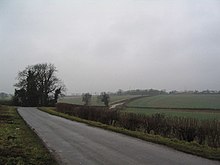

A proposed 2 hourly service promised by National Express East Coast (who lost the franchise on 13 November 2009) between Lincoln and Kings Cross has yet to start running, though was promised to start running by 2010.
Most rail services are currently provided by East Midlands Trains and Northern Rail. East Coast and Cross Country Trains have services which pass through the county, with East coast trains frequently passing and stopping at Grantham on the East Coast mainline and a daily return train to Lincoln which is at the end of the branch line, while Cross country trains stop at Stamford on their way between Birmingham and Stanstead Airport. Stations along the Humber are served by First Transpennine Express services between Manchester Airport and Cleethorpes. Lincolnshire boasts one of the most infrequent services in the UK. Services on the Sheffield-Gainsborough Central-Cleethorpes line sees trains only on a Saturday with three trains in both directions. This line is, however, used for freight. Calls have been made to re-introduce an hourly service on the line.
As of 22 May 2011 East Coast have started running a Lincoln-London service. One train travels both ways each day, and a north bound service is there on a Sunday. East Midlands Trains also run a daily (Mon-Sat) service each way between Lincoln and London St Pancras, though the service is more a stopping service and takes around 3 hours via Nottingham, compared to East Coast's service to London Kings Cross which takes around 1h 50 minutes.
The only airport in Lincolnshire is Humberside Airport, near Brigg. While small, it serves all of Lincolnshire. Robin Hood Airport near Doncaster is within travelling distance of much of Lincolnshire and provide a wider range of flights.
The county's biggest bus companies are Stagecoach Grimsby-Cleethorpes (formerly Grimsby-Cleethorpes Transport) and Stagecoach in Lincolnshire, (formerly Lincolnshire Road Car). Several other small companies also operate including Delaine of Bourne and Hornsby's of Scunthorpe.[7]
A Sustrans cycle route runs from Lincoln to Boston in the South of the county.[8]
Health care
The United Lincolnshire Hospitals NHS Trust[9] is one of the largest trusts in the country, employing almost 4,000 staff and with an annual budget of over £200 million. The north of the county is served by the Northern Lincolnshire and Goole Hospital NHS Foundation Trust.
Lincolnshire shares the problems of elsewhere in the country when it comes to finding an NHS dentist, with waiting lists of eight months not uncommon.
Some of the larger hospitals in the county include:
- Diana Princess of Wales Hospital, Grimsby
- Scunthorpe General Hospital
- Boston Pilgrim Hospital
- Lincoln County Hospital
Since April 1994, Lincolnshire has had an Air Ambulance service.[10] The air ambulance is stationed at RAF Waddington near Lincoln and can reach emergencies in Lincolnshire within 25 minutes. An A&E hospital is only 10 minutes away by helicopter from any accident in Lincolnshire.
Drainage
Separately to the commercial water companies the low-lying parts of the county are drained by various internal drainage boards, such as the Black Sluice Internal Drainage Board,Witham 4th District IDB, Lindsey Marsh Drainage Board, or the Welland and Deepings Internal Drainage Board.[11]
Towns and villages

The non-metropolitan county of Lincolnshire is characterised by the absence of any major urban areas, apart from the areas in and around Lincoln and Boston. However, the Skegness, Ingoldmells and Chapel St Leonards areas (and to a lesser extent the Sutton-on-Sea and Mablethorpe areas) along the Lincolnshire Coast are becoming increasingly urbanised as people holiday at large caravan sites during the summer months. These holidaymakers are not reflected in census or local population figures, though it is estimated that during the height of the summer months there are over 100,000 such people residing in these areas along the Lincolnshire Coast. This has an appreciable impact on the local infrastructure and amenities.

The principal settlements and their populations are: Lincoln (93,100),[12] Boston (64,600),[13] Grantham (33,243),[14] Spalding (30,000),[14] Gainsborough (20,110), Skegness (18,910), Stamford (17,492),[14] Louth (17,000), Bourne (11,933), Mablethorpe (11,700), North Hykeham (11,538), Sleaford (10,388),[14] Holbeach (9,448), Deeping St. James (6,923), Market Deeping (6,200), Horncastle (6,090), Waddington (6,086), Long Sutton (5,037), Sutton Bridge (3,936), Ingoldmells (3,888), Saxilby (3,660), Woodhall Spa (3,657), Crowland (3,607), Coningsby (3,238), Market Rasen (3,230), Heckington (3,069), Alford (2,700), Caistor (2,601), Spilsby (2,336), Stickney, Lincolnshire (2,150) and Tattershall, (2,049). Other places of interest include Ancaster, Corby Glen, Belmont, Donington, Billingborough, Chapel St Leonards, Sutton-on-Sea, Wainfleet All Saints and Donna Nook. Many of the towns in the county continue to hold a weekly market, a centuries-old tradition reinvigorated recently by the growth of farmers' markets.
Most of the urbanised area of Lincolnshire is on the Humber estuary, where two unitary authorities are located:
- North East Lincolnshire, where the two towns of Great Grimsby (87,574)[13] and Cleethorpes (34,907) have become one large conurbation, and between them have a population of over 120,000: the largest single settlement in the whole of the ceremonial county of Lincolnshire. The next largest town is Immingham (12,200) followed by Scartho (9,380), Waltham (6,425), Humberston (5,375) and New Waltham (4,557)
- North Lincolnshire has the larger area of the two unitary authority areas and it includes Scunthorpe (75,514) (including Bottesford).[14] The next largest town is Barton-upon-Humber (9,334), followed by Brigg (5,076), Winterton (4,729), Crowle (4,090), Epworth (3,734), Kirton in Lindsey (2,964) and Barrow upon Humber (2,745).
For a full list of Lincolnshire towns and villages see the List of places in Lincolnshire page.
Coastal tourism
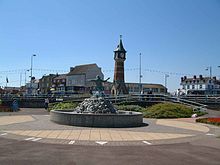


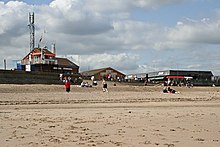


The majority of tourism in Lincolnshire relies on the coastal resorts and towns which lie to the east of the Lincolnshire Wolds. The county is home to some of the most well known seaside resorts within the United Kingdom and is a major attraction to visitors from across England, especially the East Midlands and parts of Yorkshire. There are three main coastal resorts within Lincolnshire along with a number of smaller village resorts.
The main county seaside resort of Skegness with its famous Jolly Fisherman mascot and famous slogan "Skegness is so bracing" with its neighbouring large village coastal resorts of Ingoldmells and Chapel St. Leonards provides the biggest concatenation of resorts along the Lincolnshire Coast due to their close proximity of each other and due to the number of large caravan and holiday sites. The resorts offers many amusements, leisure activities and beaches and retail shopping and is home to Butlins Skegness, Fantasy Island, Church Farm Museum, Natureland Seal Sanctuary, Skegness Stadium, Skegness Pier and several well-known local golf courses as well as good road, bus and rail links to the rest of the county.
The second largest concatenation of resorts along the coast is the small seaside town of Mablethorpe, famous for its golden sands and its neighbouring village resorts of Trusthorpe and Sutton-on-Sea, these areas also offer leisure activities and is also home to large caravan and holiday sites although the area is less developed with fewer amusement arcades and nightclubs and poorer road links to the rest of the county although the area offers a more traditional seaside setting. The rail service to these towns was axed during the Beeching era of British Railways.
The third concatenation of resorts is the seaside town of Cleethorpes and the large village resort of Humberston within North East Lincolnshire and is home to Pleasure Island Family Theme Park, Cleethorpes Coast Light Railway and Cleethorpes Pier along with its local golf courses and caravan and holiday sites are a major attraction to visitors from the north of the county and across the north of England. Cleethorpes is well served by road and rail being easily accessible from the M180 and the First Transpennine Express route to Manchester.
Nature is an attraction for many tourists: the south-east of the county is mainly fenland that attracts many species of birds, as do the nature reserves at Gibraltar Point, Saltfleetby and Theddlethorpe. The reserve at Donna Nook also has a native seal colony popular with nature lovers.
The market towns of the Lincolnshire Wolds, Louth, Alford, Horncastle, Caistor and Spilsby are also attractive, with several having historic links. The wolds are quite popular for cycling and walking, with regular events such as the Lincolnshire Wolds Walking Festival.
Culture

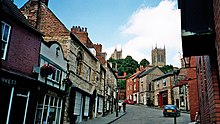
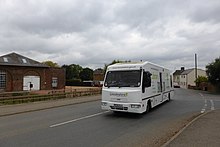
Lincolnshire is a rural area where the pace of life is generally much slower than in much of the United Kingdom. Sunday is still largely a day of rest, with only shops in Lincoln, larger market towns, and resorts and industrial towns of the North Sea coast generally remaining open. Some towns and villages in the county still observe half-day closing on Thursdays. Due to the large distances between the towns, many villages have remained very self-contained, with many still having shops, pubs, local halls and local chapels and churches, offering a variety of social activities for residents. Fishing (in the extensive river and drainage system in the fens) and shooting are popular activities. A lot of the culture in Lincoln itself is based upon its history. The Collection is an archaeological museum and art galley in Lincoln. Lincoln Cathedral also plays a large part in Lincoln's culture, playing host to many events throughout the year, from concert recitals to indoor food markets.
Lincolnshire's unofficial county anthem is the Lincolnshire Poacher.
A Lincolnshire tradition was that front doors were used for only three things: a new baby, a bride, and a coffin.[16]
People
Lincolnshire is relatively unusual in the composition of its population, being one of the least ethnically diverse counties of the United Kingdom (98.5% of the population describe themselves as "white"). Over recent years inward migration by people from ethnic minority communities has increased (particularly to population centres such as Lincoln and Boston) but the absolute number of non-white Lincolnshire residents remains very low.
Recently, the county has also witnessed a growing trend towards immigration of retired people from other parts of the United Kingdom, particularly those from the southern counties of England attracted by the generally lower property prices and the slower and more relaxed pace of life. The relatively high proportion of elderly and retired people is reflected in many of the services, activities and events. Sleaford is considered one of the fastest growing towns in the East Midlands, with many professional people moving there to benefit from (relatively) low house prices, average crime rate and the selective education offered.
Those born in Lincolnshire are sometimes given the nickname of Yellowbellies (often spelt "Yeller Bellies", to reflect the pronunciation of the phrase by the typical Lincolnshire farmer). The origin of this term is debated, but is most commonly believed to derive from the uniform of the 10th Regiment of Foot (later the Lincolnshire Regiment) which featured yellow facing. For this reason, the coat of arms of Lincolnshire County Council is supported by two officers of the regiment.[17]
Notable people
Lincolnshire has many notable people associated with it, such as:


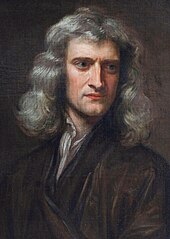




- Former Prime Minister Margaret Thatcher
- Guthlac of Crowland
- Hereward the Wake
- Little Saint Hugh of Lincoln
- Bishops of Lincoln Hugh of Lincoln and Robert Grosseteste
- Eleanor of Castile
- Katherine Swynford
- King Henry IV of England
- Composer William Byrd
- Chief Advisor to Queen Elizabeth I William Cecil, 1st Baron Burghley
- Scientist Sir Isaac Newton
- Havelok the Dane
- Arctic explorer Sir John Franklin
- Botanist and plant collector Joseph Banks
- Navigator and cartographer Matthew Flinders
- Geographer Halford Mackinder
- Explorer of Australia George Bass
- Mathematician George Boole
- One of the Founding Fathers of the United States, Thomas Paine, who was appointed as a Grantham-based excise officer in December 1762.
- Chronometer innovator John Harrison
- Antiquarian William Stukeley
- Artists Frank Bramley and Peter De Wint
- Journalist Herbert Ingram
- Poets Alfred Lord Tennyson, Jean Ingelow, Anne Bradstreet and Elizabeth Jennings
- Bishop and founder of Corpus Christi College, Oxford, Richard Foxe
- Protestant martyr Anne Askew
- Founder of the Baptist denomination John Smyth (Baptist minister)
- Archbishop of Canterbury John Whitgift
- Translator on the Committee for The King James Bible Robert Tighe
- Author of "Foxe's Book of Martyrs" John Foxe
- Puritan John Cotton
- Founders of the Methodist movement John Wesley and Charles Wesley.
- Preacher Samuel Eyles Pierce
- Theologian and Methodist writer Richard Watson
- Bible commentator and co-founder of Church Missionary Society Thomas Scott (commentator)
- Leader of the settlement Jamestown, Virginia, Captain John Smith
- Actresses Madge Kendal and Sybil Thorndike
- A part of the Music Hall Act Old Mother Riley, Arthur Lucan
- Railway administrator Frank Pick
- "The Acid Bath Murderer" John George Haigh
- Businesswoman and Welsh language translator Lady Charlotte Guest
- Inventor of Crucible Steel Benjamin Huntsman
- Tenor Alfred Piccaver
- Field Marshal William Robertson
- Founder of "The Samaritans" Chad Varah
- Industrialists Joseph Ruston and William Tritton
- R.A.F personnel Douglas Bader, Leslie Manser, Frank Whittle, Guy Gibson
- Victoria Cross recipients Charles Richard Sharpe and Harold Jackson (VC)
- Founder of Royal College of Nursing Sarah Swift
- Historian Francis Hill
Present day figures include
- Actors Thomas Turgoose, Jim Broadbent, Jonathan Kerrigan and Neil McCarthy
- Actor John Alderton
- Actresses Patricia Hodge, Joan Plowright, Liz Smith, Kelly Adams and Sheridan Smith
- Actress and comedienne Jennifer Saunders
- Radio and TV presenter Nicholas Parsons
- Crime writer Colin Dexter
- Astronaut Michael Foale
- Songwriters Bernie Taupin and Rod Temperton
- Military historian and author Bruce Barrymore Halpenny
- Actor and comedian Robert Webb
- Musicians Jane Taylor and Neville Marriner
- Musician and composer Robert Wyatt
- Golfer Tony Jacklin
- Shotputter Geoff Capes
- Swimmers Paul Palmer and Kate Haywood
- Footballers Lee Chapman, Ray Clemence, Chris Woods, and Paul Mayo
- Cricketer Luke Wright
- Fashion designer Antonio Berardi
- Glamour model Abi Titmuss
- Motorcycle racer and television presenter Guy Martin
- Business executive and wife of the Prime Minister, Samantha Cameron
- Newsreader and journalist Helen Fospero
Language
The accent and dialect words of Lincolnshire are little known outside the county, especially compared with more familiar accents, e.g. Geordie and Cockney. The effects of modern media, education, and immigration to the county have substantially diluted the traditional accent, and many dialect words have been lost over recent years. However, the accent exists, and a native "Yeller Belly" will still pick out a Lincolnshire speaker, possibly even being able to distinguish where in the county the speaker is from. The northern residents of Lindsey tend towards a Yorkshire-like dialect, as do people from Lincoln. People from Grimsby and Cleethorpes have an accent of their own, rather than similar to that of Hull, though both bear some resemblance in sound to Liverpool Scouse. The accent of the south-east of the county (Holland and the Fens) is more similar to that of East Anglia, notably north Cambridgeshire and north Norfolk (though not "deepest" Norfolk, which is different), yet Grantham and Stamford, though very close geographically, are famed for having a rather "posh" accent, at least among the middle-class, Stamford having in fact been determined to have the accent closest to the Queen's English. That leaves the East Lindsey area from the Wolds to the coast, in which the "truest" Lincolnshire accent is present. Elements of this remain widespread in that area among old and young alike, while certain individual speakers – especially of older generations – have full mastery of this quite specific tongue.
In common with most other Northern and Midlands dialects in England, "flat" a is preferred, i.e. /ˈbæθ/ over /ˈbɑːθ/, and also in words like water, pronounced /ˈwætər/ watter (though such a pronunciation is rarely heard nowadays). Similarly, /ʌ/ is usually replaced by /ʊ/. Features rather more confined to Lincolnshire include:
- Elaboration of standard English /eɪ/ or /iː/ into a complex triphthong approximating, and often transcribed -air- or -yair-. For example: "mate" [m(j)ɛːət]; "beast" [b(j)ɛːəst]; "tates" (potatoes) [t(j)ɛːəts].
- An equivalent elaboration of standard English /oʊ/ – commonly [oː] in Northern England – into -ooa-. For example "boat" [bʊːət].
- Insertion of an extra schwa into the standard English diphthong /aʊ/.
- Vocabulary: "duck" as a term of endearment or informal address, "mardy" meaning upset or angry, "mowt" (pronounced like mout) for might,"while" as a substitute for standard English "until", "frit" meaning frightened, "grufty" meaning dirty or disgusting, and the inimitable salutation "now then!?" (hello), sometimes written nairn to reflect pronunciation.
- In the north east of the county, around Grimsby and Immingham, the nurse-square merger can be heard, as is also the case along the east coast of Yorkshire and coincidentally also in Liverpool. Words that take /ɜː/ in RP take /ɛː/ in these areas.
Lincolnshire has its own dialect "champion", a farmer from the village of Minting called Farmer Wink (real name Robert Carlton), who has produced videos about rural life, narrated in his broad Lincolnshire accent, and who has a regular slot on BBC Radio Lincolnshire. A resident of Woodhall Spa, ironically one of the Lincolnshire settlements least aligned to the county's architectural style, has published a dictionary of words once prevalent in parts of the county.[18]
Music
Lincolnshire was historically associated with the Lincolnshire bagpipe, an instrument derided as a coarse and unpleasant instrument in contemporary literature, but noted as very popular in the county. The last player, John Hunsley of Middle Manton,[19] died in 1851,[20] and since then the instrument has been extinct.
In 1937, Percy Grainger wrote his Lincolnshire Posy for wind band. The piece is a compilation of folksongs "musical wildflowers" collected by the composer in and around the county of Lincolnshire.
Food

Lincolnshire has a number of local dishes:
- Stuffed chine – this is salted neck-chine of a pig taken from between the shoulder blades, salted for up to ten months and stuffed with parsley (other ingredients are normally kept secret), and served cold.
- haslet – a type of pork loaf, also flavoured with sage (pronounced HAYSS-let or AYSS-let in Lincolnshire but HAZ-let in many other parts of the country).
- Lincolnshire sausages – most butchers in Lincolnshire have their own secret recipe for these and a competition is held each year to judge the best sausages in the county. Traditional Lincolnshire sausages are made entirely from minced pork, stale bread crumb (rusk is used nowadays) pepper, sage and salt. The skins should be natural casings which are made from the intestines of either sheep or pig.
- Pork pies – the same pork butchers will take a pride in their unique recipe for pork pies.
- Plum bread – as with plum pudding, plum refers to dried fruit, namely currants, raisins and sultanas, sometimes soaked in tea.
- Grantham Gingerbread – a hard white ginger biscuit.
- Lincolnshire Poacher cheese – cheddar cheese produced in Alford. Lincolnshire Poacher has won numerous awards over the years including Supreme Champion at the 1996/7 British Cheese Awards and Best British Cheese at the World Cheese awards in 2001/2.
- Batemans ales – a beer brewed in Wainfleet and served in many pubs, such as Willoughby Arms in Little Bytham, in the county and further afield.
- There are several small breweries, such as Newby Wyke Brewery.
- Grimsby is renowned for its fishing industry, and historically Grimsby Fish has carried a premium price. Since the decline of the fishing industry following entry to the European Economic Community in the 1970s this is no longer the case, with the majority of fish sold at the town's fish market being brought overland from other ports. However Grimsby Fish is still a recognised product, one associated with a particular area that specialises in and has expertise in a particular trade (cf Sheffield steel). In 2009 smoked fish from the town was granted Protected Geographical Indication by the European Union, reflecting the unique smoking methods used by certain local fish companies.[21]
Craft Chocalatiers can be found throughout[22][23][24] the county, such as Hansens[25] in Folkingham.[26] In 2013 Redstar Chocolate's Duffy's Venezuela Ocumare Milk won a Gold medal as best bean-to-bar.[27][28] The factory is in Cleethorpes.[29]
Events
Every year the Lincolnshire Agricultural Society, founded in 1869, stages the Lincolnshire Agricultural Show.[30] It is held on the Wednesday and Thursday of the last whole week of June at its showground at Grange de Lings, a few miles north of Lincoln on the A15. The show was first held here in 1958. First held around the year 1884, it is one of the largest agricultural shows in the country, and is attended by around 100,000 people over its two days. The showground is in regular use throughout the year for a wide range of other events and functions.
Smaller local agricultural shows, such as the Heckington Show[31] can still be found. Corby Glen sheep fair[32] has been held since 1238.
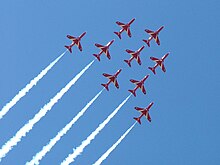
Each year RAF Waddington is the home to the RAF International Waddington Air Show. The two-day event attracts around 150,000 people and usually takes place during the first weekend of July. Since its inception over 35 countries have participated, with aircraft from around the globe attending the Lincolnshire Base.
On the Monday before Easter, an unusual auction takes place in Bourne to let the grazing rights of the Whitebread Meadow.[34] Bidding takes place while two boys race toward the Queen's Bridge in Eastgate, the end of which dash is equivalent to the falling of the gavel. The whole affair dates back to the 1742 will of William Clay.
The Haxey Hood village competition takes place every January, as it has for over 700 years.
Stamford Mid-Lent fair sees showmen converge on the town the week after Mothering Sunday, with rides and sideshows filling Broad Street, the Sheepmarket and the Meadows for a week. Stalls selling Grantham gingerbread and nougat are a traditional feature. The following week sees them in Grantham, on the way North for the Summer. Roger Tuby brings a small funfair to Bourne and then to Spalding in Spring and returns in Autumn at the end of the season.
The villages of Tetford and Salmonby hold an annual Scarecrow Festival in May every year.
The Belchford Downhill Challenge which is held every two years: soapbox racers race down the hill at up to 30 km/h. The turnout has been up to 1,000.
In recent years Lincoln Christmas Market, a street market throughout historic area of the city, has been held at the start of December. Around the same time Christmas lights are turned on in Bourne, Sleaford, Skegness, and other towns.
Throughout the summer the Stamford Shakespeare Company[35] presents the Bard's plays in the open air theatre at Tolethorpe Hall, which is actually in Rutland.
The Spalding Flower Parade is held in late spring every year. Colourful floats decorated with tulip heads compete for a cup. The tradition was started in 1959 and draws coach tours from across Britain.
Sport
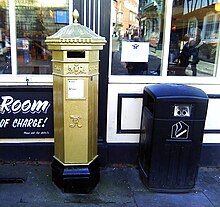
The main sports played in the county are football, cricket and rugby union. Lincolnshire does not have high sporting profile, mainly due to the lack of facilities. Probably the most well known sporting venue in Lincolnshire is Cadwell Park near Louth, where a round of the British Motorbike Championship is held on the last Monday of August every year.
- One team from Lincolnshire plays in the Football League: Scunthorpe United play in Football League Two. In non-league football both Lincoln City and Grimsby Town play in the Conference National, whilst Boston United and Gainsborough Trinity play in the Conference North Division.
- In cricket Lincolnshire are a minor county and play in the Minor Counties Championship.[36]
- In hockey Lincoln Hockey Club play in the North of Lincoln.
- There is no major rugby union team from Lincolnshire; however the sport is played in many schools throughout the county.
- Lincolnshire is home to one racecourse, at Market Rasen.
- Cadwell Park is the only motor racing course in Lincolnshire. There is a speedway track in Scunthorpe, home of the Scorpions, and stock-car racing at a stadium at Orby, near Skegness.
- Lincolnshire is home to the UK roller derby team the Lincolnshire Bombers Roller Girls, who are sponsored by Motorhead.[37]
Symbols
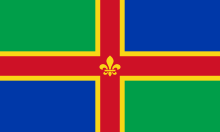
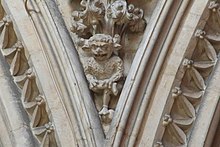
The unofficial anthem of the county is the traditional folk song, "The Lincolnshire Poacher", which dates from around 1776. A version of the song was the theme to BBC Radio Lincolnshire for many years.
According to a 2002 marketing campaign by the charity Plantlife, the county flower of Lincolnshire is the Common Dog-violet.
In August 2005, BBC Radio Lincolnshire and Lincolnshire Life magazine launched a vote for a flag to represent the county. Six competing designs were voted upon by locals. The winning submission was unveiled in October 2005.[38][39] Lincoln has its own flag – St George's flag with a Fleur-de-Lys.
The Lincoln Imp has symbolised Cathedral, City, and county for many years.[40][41] In 2006 it was replaced as the brand of Lincolnshire County Council by the stylised version seen on the header here [3] which has lost even the unique pose of the carving.
Press
The county is home to one daily newspaper, the Grimsby Telegraph which as the name suggests, is published in the town and whose circulation area ostensibly covers North East Lincolnshire, although it reaches as far south as Louth and Alford and as west as Brigg.
There are two further weekly papers which used to be published daily until 2011; the Lincolnshire Echo is published weekly from Lincoln and covers the majority of the county reaching as far north as Louth, and the Scunthorpe Telegraph which covers northern Lincolnshire. All three are ultimately owned by the Daily Mail and General Trust.
There are also a number of weekly papers serving individual towns published in the county by Johnston Press. One of these, the Stamford Mercury claims to be Britain's oldest newspaper, although it is now a typical local weekly and no longer covers stories from the whole East Midlands as the archived copies did.
Television
With the exception of a small area to the south-west of the county,[42] Lincolnshire is served from the Belmont transmitter,[43] receiving programmes from ITV1 Yorkshire and BBC One Yorkshire and Lincolnshire regions.
The BBC has, since 2003, provided the area with its twelfth regional service: BBC Yorkshire and Lincolnshire, carrying a local "Look North" news programme from the main studio in Hull, with input from other studios in Lincoln and Grimsby.
ITV provides coverage through its evening news programme "Calendar". Until late 2008 the station provided a separate edition for the Belmont transmitter (although it was still broadcast from Leeds). From January 2009 the area is now covered by a programme that covers the entire ITV Yorkshire region.
From 1959 to July 1974 ITV programmes were provided by Anglia Television (although some coverage could be received from the Manchester-based Granada and ABC Weekend). Based in Norwich the company had news offices in Grimsby.[44] Following a transmitter change ITV services were provided by Yorkshire Television. This company kept open the offices in Grimsby and opened further facilities in Lincoln, although both of these closed in the mid-1990s.
South-West Lincolnshire receives BBC East Midlands and ITV Central which are broadcast from the Waltham on The Wolds Transmitting Station. Although subject to co-channel interference from the Waltham transmitter, a small number of households in the southern tip of the county[45] are able to receive regional programming from BBC East and ITV Anglia.
Radio
The area is covered by several local radio stations including:
- BBC Lincolnshire Can be heard throughout historic Lincolnshire although its broadcast remit is the present county of Lincolnshire
- BBC Radio Humberside The counties of northern Lincolnshire that were formerly known as South Humberside
- Boundary Sound Newark (closed 2011)
- Compass FM Grimsby, Cleethorpes and Immingham
- Heart Peterborough and South Lincolnshire
- Lincs FM Historic Lincolnshire
- Gravity FM Grantham
- Siren FM Lincoln
- Endeavour FM (formerly Stump Radio) Boston
- Endeavour Radio Boston
- Tulip Radio Spalding and South Holland
- Viking FM Northern Lincolnshire and the East Yorkshire, formerly the constituent areas of Humberside
Places of interest
See also
- Outline of England
- Custos Rotulorum of Lincolnshire – List of Keepers of the Rolls for Lincolnshire
- Earl of Lincoln is a title that has been created eight times in the Peerage of England and is currently represented.
- High Sheriff of Lincolnshire
- Lincolnshire (UK Parliament constituency) List of MPs for the Lincolnshire constituency
- Lincs Wind Farm
- List of companies in Lincolnshire – Current and former companies
- List of monastic houses in Lincolnshire
- Lord Lieutenant of Lincolnshire
- Stamford Senior Youth Theatre
References
- ^ "Lincolnshire County Council". Thebythams.org.uk. 24 October 2005. Retrieved 29 June 2010.
- ^ "Potato Council Sutton Bridge Crop Storage Research (CSR) facility". Potato.org.uk. 12 September 2012. Retrieved 2 April 2013.
- ^ www.granthamjournal.co.uk
- ^ "UPDATED: Fenland Foods workers to protest – Features". Grantham Journal. 13 May 2008. Retrieved 29 June 2010.
- ^ Why did voters turn to Ukip in parts of true blue Lincolnshire?. Telegraph. Retrieved on 17 July 2013.
- ^ "Town centres data from 2000". Archived from the original on 9 March 2005. Retrieved 2 April 2013.
- ^ "Home". Hornsbytravel.co.uk. Retrieved 2 April 2013.
- ^ "Sustrans Lincolnshire". Sustrans.org.uk. Retrieved 2 April 2013.
- ^ "United Lincolnshire Hospitals NHS Trust Website – Home". Ulh.nhs.uk. Retrieved 2 April 2013.
- ^ [1]
- ^ Map of Lincolnshire IDBs[dead link]
- ^ "Census 2001 – Population Pyramids – Lincoln". Statistics.gov.uk. 27 March 2011. Retrieved 2 April 2013.[dead link]
- ^ a b "Census 2011 – Population Pyramids – Boston". Statistics.gov.uk. 27 March 2011. Retrieved 2 April 2013.[dead link]
- ^ a b c d e Pears Cyclopedia, 107th Edition, Penguin, London
- ^ "Mobile Libraries". Lincolnshire County Council. Retrieved 22 November 2013.
Wherever you live in Lincolnshire, whether in the countryside of the Wolds or Fens, the Coastal area or even on the edge of a town, a Mobile Library will stop nearby.
- ^ "Lincolnshire Sayings and Traditions". Rootsweb.ancestry.com. Retrieved 2 April 2013.
- ^ "Civic Heraldry visited 22 December 2006". Civicheraldry.co.uk. Retrieved 2 April 2013.
- ^ [2][dead link]
- ^ Binnall, P.B.B., "A Man of Might" in FOLKLORE Vol.52, p.73, 1941
- ^ Binnall, P.B.G. "A Man of Might", in FOLKLORE Vol.52, p.74, 1941
- ^ Elliott, Valerie (17 November 2009). "Traditional Grimsby Smoked Fish is granted European PGI status". The Times. London.
- ^ "Chocolatier in Louth". Retrieved 7 July 2013.
- ^ Bingham, Caroline (November 2012). "Chocolatier in Willingham". Lincolnshire Life. Retrieved 7 July 2013.
- ^ "chocolatier in Skegness". Retrieved 7 July 2013.
- ^ "Hansen's chocolate house". Retrieved 7 July 2013.
- ^ "Hansen's Chocolate House, Folkingham, Lincolnshire". Explore Lincolnshire. Retrieved 7 July 2013.
- ^ "Best Milk Chocolate Bean-To-Bar". 2013 awards. Acadamey of Chocolate. Retrieved 7 July 2013.
- ^ Williams, Holly (7 July 2013). "Best of British". Independent. Retrieved 7 July 2013.
- ^ "Red Star Chocolate". Retrieved 7 July 2013.
- ^ "Lincolnshire Events Centre". Lincolnshire Showground. Retrieved 29 June 2010.
- ^ "The Largest Village Show in England". Heckingtonshow.org.uk. Retrieved 29 June 2010.
- ^ "Corby Glen Sheep Fair Gallery". Corbyglen.com. Retrieved 29 June 2010.
- ^ "RAF Red Arrows – Home". Raf.mod.uk. 11 January 2010. Retrieved 29 June 2010.
- ^ "The White Bread Meadow". Homepages.which.net. Retrieved 29 June 2010.
- ^ "Stamford Shakespeare Company". Stamfordshakespeare.co.uk. Retrieved 29 June 2010.
- ^ Play-Sport New Media (13 June 2002). "Play-Cricket the ECB Cricket Network". Lincscb.play-cricket.com. Retrieved 29 June 2010.
- ^ "Now sponsored by MOTÖRHEAD! – Lincolnshire Bombers:". Lincolnshire Bombers' News forum. 1 April 2009. Retrieved 11 January 2010. [dead link]
- ^ "New county flag design unveiled". BBC News. 24 October 2005. Retrieved 15 February 2010.
- ^ "Lincolnshire flag at the self-appointed flag registry".
- ^ Santos, Cory (19 April 2013). "Tracking the mysterious origins of the Lincoln Imp". The Lincolnite. Retrieved 7 July 2013.
the imp has come to represent Lincoln as its mischievous mascot.
- ^ Williams, Phil (16 December 2011). "A History of the Lincoln Imp". Lincoln Cathedral. Retrieved 7 July 2013.
Lincoln's imp is a well known emblem of the Cathedral and the city, to the extent it has been adopted as the symbol of Lincoln
- ^ Map of area served by the Waltham UHF analogue TV transmitter
- ^ Map of area served by the Belmont UHF TV transmitter
- ^ ITV 1968 – A Guide to Independent Television, Independent Television Authority, London, 1967, page 175
- ^ Map of area served by the Sandy Heath UHF analogue TV transmitter
- Foster, C. W.; Longley, Thomas, eds. (1924). The Lincolnshire Domesday and Lindsey Survey. Annual works of the society. Vol. 19. Horncastle: Lincoln Record Society.
External links
- Lincolnshire County Council website
- Lincs FM website
- Visitlincolnshire.com
- Lindcolne Skipfierde: Lincolnshire's Anglo-Saxon, Viking and Norman re-enactment and living history group
- Lincolnshire Show official website
- Pathe newsreel of motor tractors at 1919 agricultural show, thought to be Lincoln show
- Images of Lincolnshire at the English Heritage Archive







